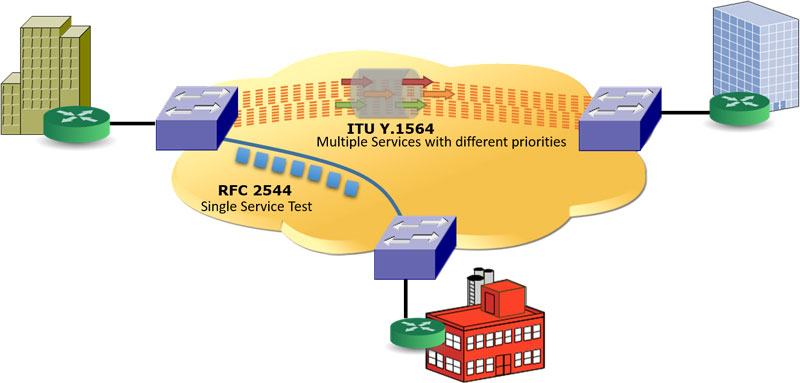A Comparison of Carrier-Grade Ethernet Testing Methodologies (RFC 2544 Vs ITU-T Y.1564)
Gaithersburg, Maryland, USA – September 26, 2016 - GL Communications Inc., announced today its product capability in compliance with Carrier-Grade Ethernet Services: RFC 2544 - Benchmarking methodology for network Interconnect devices and ITU-T Y.1564 - Ethernet service activation test methodology.

Speaking to the press, Mr.Jagdish Vadalia, a Senior Manager for Product Development of the company said, “Service providers are shifting from only providing Ethernet pipes to enabling Ethernet services. Networks must support multiple services from multiple customers, and each service has its own performance requirements that must be met even under full load conditions and with all services being processed simultaneously.”
He explained, “RFC 2544 was designed as a performance tool with a focus on a single stream to measure maximum performance of a Device UnderTest (DUT) or Network Under Test (NUT) and was never intended for multiservice testing. The new ITU-T Y.1564 standard has been specifically created to test basic services on packets and to resolve gaps of the RFC 2544 standard. ITU-T Y.1564 is intended for multiservice testing to measure the maximum performance of the DUT or the NUT.
ITU-T Y.1564 standard is a set of procedures that test the ability of Ethernet-based services to carry a variety of traffic (voice, data, and video) at defined performance levels. In particular, it is aimed at addressing limitations of legacy RFC 2544 test procedures, especially for Service Level Agreements (SLA).”
Mr. Vadalia further added, “GL offers PacketExpert™ a comprehensive testing tool for 1 Gbps /10 Gbps wirespeed Ethernet/ IP networks. The hardware includes both Optical and Electrical interfaces capable of RFC 2544, and ExpertSAM™ (ITU-T Y.1564) functionalities. Additionally, PacketExpert™ also includes other important functionalities such as BERT, Smart Loopback, Record and Playback, IP Link Simulator (IPLinkSim™), IP Network Simulator (IPNetSim™), PacketBroker and Multi-Stream Traffic Generator and Analyzer.”
He further explained, “GL’s ExpertSAM™ test suite is designed to test a service per ITU-T Y.1564 standard rather than a line per RFC 2544 standard. The RFC 2544 is limited to test maximum output for a single service i.e. it treats the whole Ethernet Line as a single service without distinguishing the multiple services within the line and it measures , while the ExpertSAM™ allows to create and test more realistic multiple services with parallel flows from the bandwidth of 0 to maximum.
RFC 2544 method tests and measures the Throughput, Frame Loss, Latency and Burstability parameters in sequential order, one after the other. This not only takes a lot of time to complete and makes it unsuitable for real world testing, where all the parameters have to be measured in parallel. On the other hand, ExpertSAM™ allows testing aforementioned critical parameters of all services simultaneously. This allows a significant time saving compared to RFC 2544. ExpertSAM™ service configuration test is performed sequentially per service. For each service, it verifies that all the KPIs or SLA parameters are met, and that the service is provisioned properly.”
He added, “RFC 2544 simply measures the maximum Throughput of the service, without any consideration for committed and excess traffic. It is a simplistic test that only measures the maximum capacity of the line. Whereas ExpertSAM™ allows defining the Committed Information Rate (CIR), Excess Information Rate (EIR) and the Traffic Policing rates, and for each service, generates traffic at these rates, and measures SLA parameters for both CIR and EIR rates.”
 Back to Press Releases Index Page
Back to Press Releases Index Page